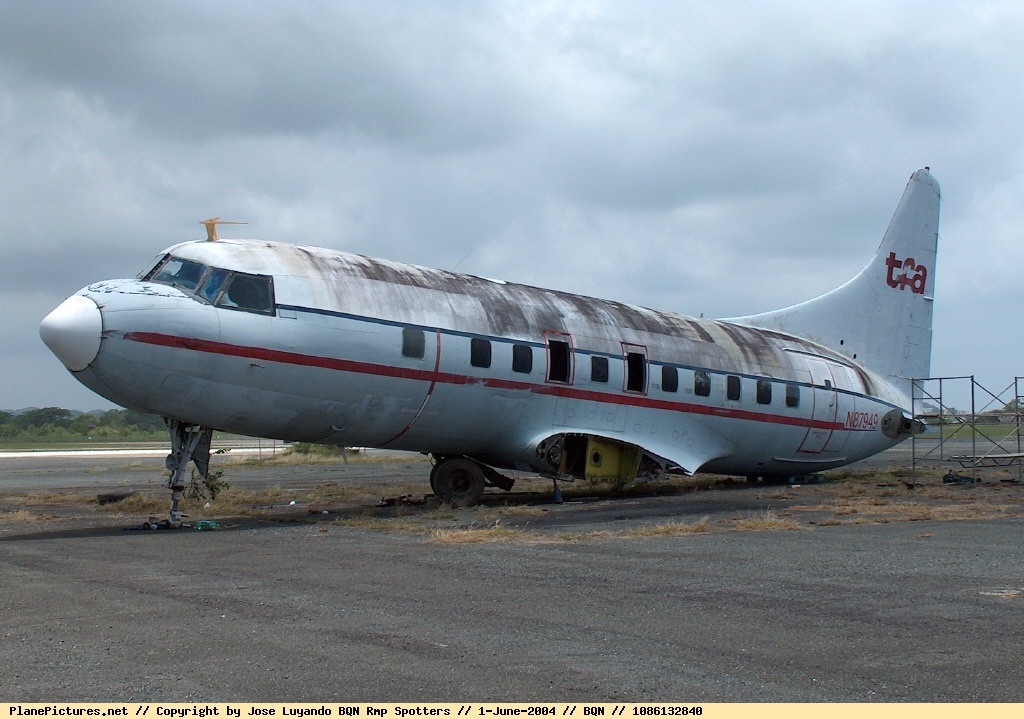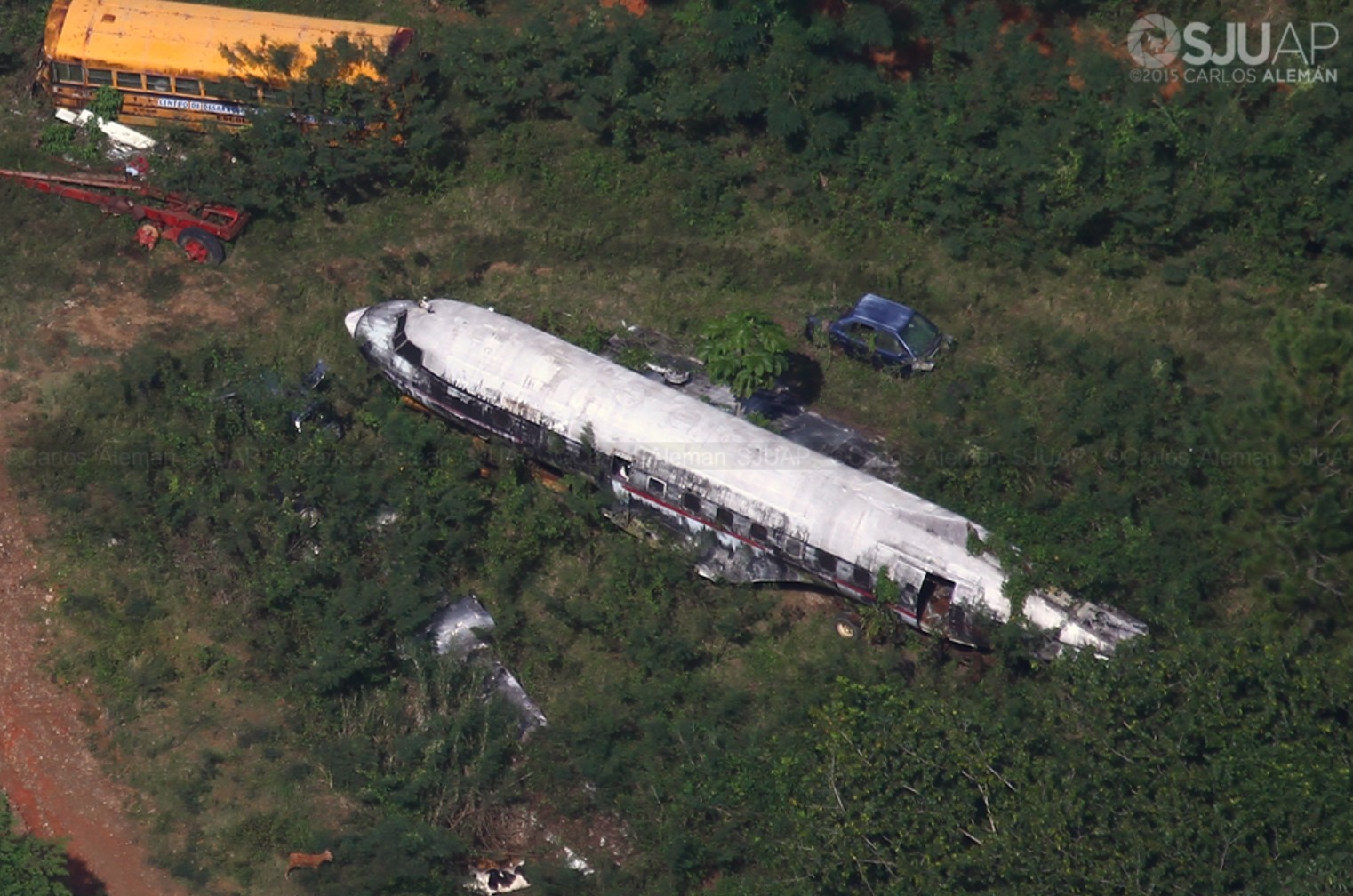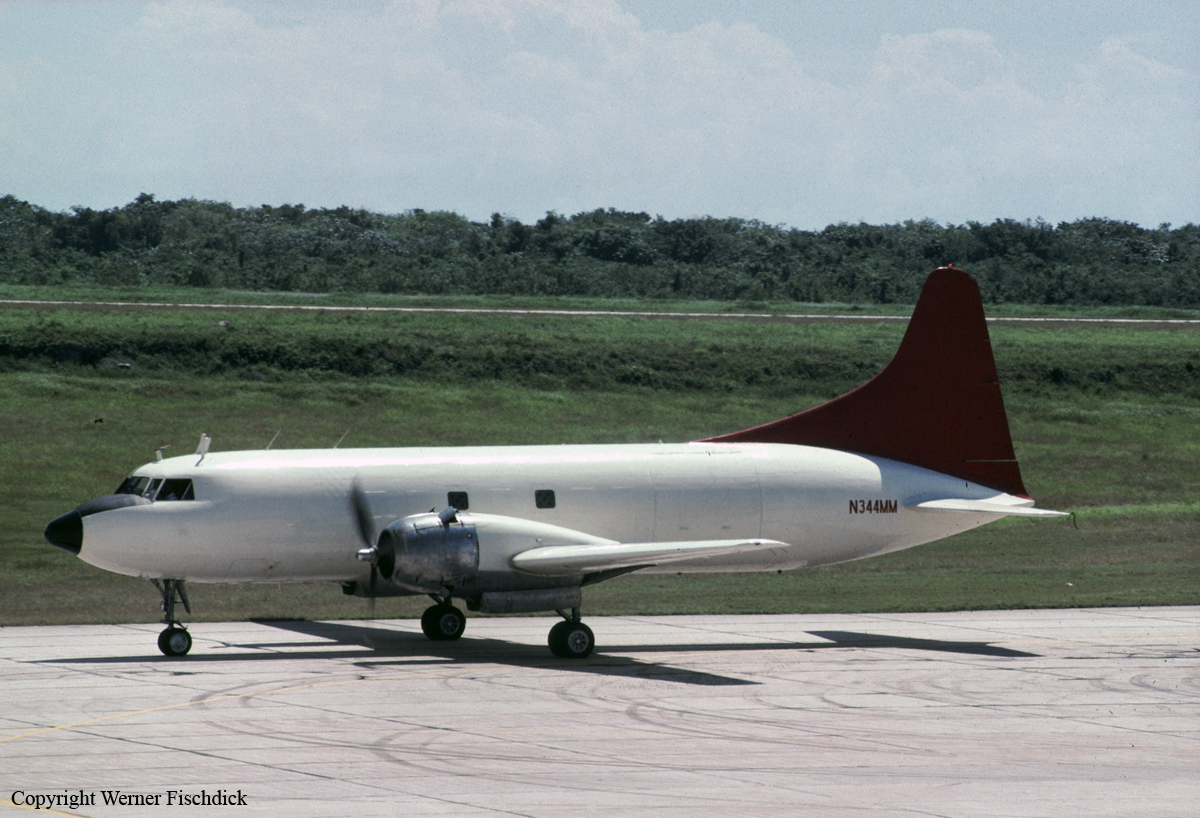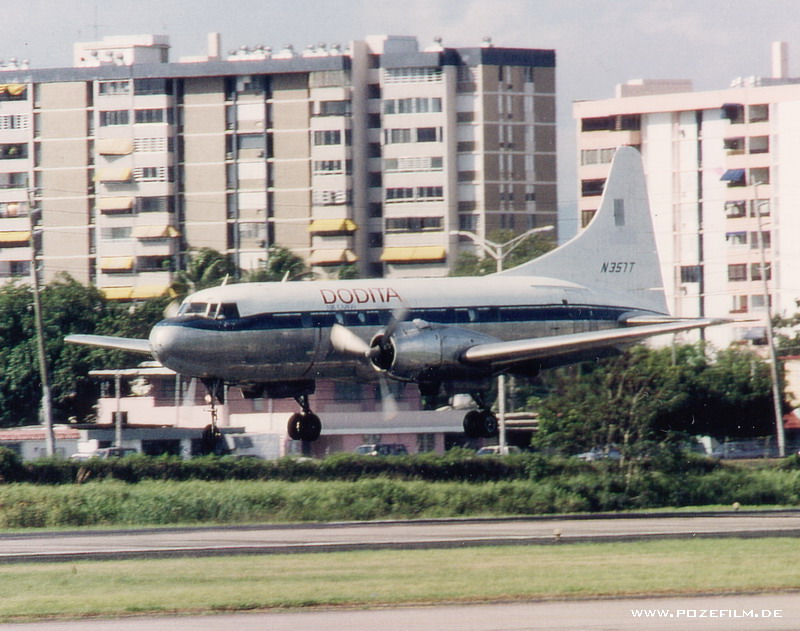Country
Crash of a Convair CV-240-13 in San Juan
Date & Time:
Sep 24, 1998 at 1319 LT
Registration:
N91237
Survivors:
Yes
Schedule:
San Juan – Santiago de Cuba
MSN:
140
YOM:
1949
Flight number:
TFA237
Crew on board:
2
Crew fatalities:
Pax on board:
1
Pax fatalities:
Other fatalities:
Total fatalities:
0
Captain / Total hours on type:
1409.00
Aircraft flight hours:
33835
Circumstances:
During the initial takeoff roll, there was a fluctuation of Brake Mean Engine Pressure (BMEPa measurement of engine output) on #2 engine, and the pilot elected to abort the takeoff. The pilot completed two additional engine run-ups, and no abnormalities were noted. During the second attempted takeoff, and as the airplane climbed through 200 feet MSL, a loud bang or back fire from the #2 engine was heard. BMEP fluctuated and dropped showing about 150 BMEP difference with engine #1. The engine oil temperature started to rise rapidly, the engine oil pressure dropped and the airplane started to vibrate. The first officer reduced the #2 engine to 'dry' power, upon which a second bang or backfire was heard from the #2 engine. The #2 propeller was then feathered by the First Officer. Since altitude could not be maintained, the pilot ditched the airplane in the salt water lagoon. An FAA Inspector who examined the crash site noted that the right engine propeller was not fully feathered, and the wing flaps were extended about three degrees.. The airplane was recovered from the water 70 days after the accident. The flight crew completed the engine out emergency procedure in accordance with the prescribed checklist.
Probable cause:
The loss of power in the No. 2 engine for undetermined reasons, and the inability of the pilot to establish a climb and/or maintain altitude. A factor was the incompletely feathered No. 2 propeller.
Final Report:

Crash of a Convair CV-240-17 in Aguadilla
Date & Time:
Jun 1, 1998
Registration:
N87949
Survivors:
Yes
Schedule:
Aguadilla - Aguadilla
MSN:
202
YOM:
1950
Crew on board:
3
Crew fatalities:
Pax on board:
0
Pax fatalities:
Other fatalities:
Total fatalities:
0
Circumstances:
The crew was completing a local training flight at Aguadilla-Rafael Hernández Airport. Following several touch-and-go manoeuvres, the crew was approaching the airport when he inadvertently raised the landing gear prior to landing. The aircraft belly landed and came to rest. All three crew members escaped uninjured while the aircraft was damaged beyond repair.
Probable cause:
Belly landing after the crew mistakenly raised the landing gear.



Crash of a Convair CV-240-53 in Zumpango: 2 killed
Date & Time:
Mar 31, 1998 at 0420 LT
Registration:
XA-TAP
Survivors:
Yes
Schedule:
Mexico City - Monterrey - Laredo
MSN:
53-13
YOM:
1954
Crew on board:
2
Crew fatalities:
Pax on board:
2
Pax fatalities:
Other fatalities:
Total fatalities:
2
Copilot / Total hours on type:
26
Aircraft flight hours:
26792
Circumstances:
Six minutes after his night takeoff from Mexico City-Benito Juarez Airport, en route to Monterrey and Laredo, the crew informed ATC about the failure of the right engine. The crew was cleared for an approach to runway 05R but the situation deteriorated rapidly. Shortly later, the captain requested the permission to make an approach to runway 23L and reported that the right engine caught fire. Less than a minute later, the crew attempted an emergency landing when the aircraft crashed in an open field located near Zumpango, about 45 km north of Mexico City Airport. Two occupants were seriously injured and two others were killed. The aircraft was destroyed.
Probable cause:
The crew was forced to attempt an emergency landing by night and IMC conditions following the failure and the fire of the right engine.
Final Report:

Crash of a Convair CV-240-53 in San Juan
Date & Time:
Jun 30, 1997 at 0745 LT
Registration:
N344MM
Survivors:
Yes
Schedule:
San Juan - Santo Domingo
MSN:
53-26
YOM:
1954
Crew on board:
2
Crew fatalities:
Pax on board:
1
Pax fatalities:
Other fatalities:
Total fatalities:
0
Captain / Total hours on type:
6970.00
Aircraft flight hours:
24793
Circumstances:
After departing from runway 08, the airplane climbed to 400 feet above ground level (agl) where the left engine lost power. After confirming a loss of power, the pilot feathered the left propeller, and called for maximum 'dry' thrust on the right engine. Wet power was available which would have provided 450 additional horsepower, however, the pilot elected not to use it. The airplane was unable to maintain altitude, collided with a palm tree, and came to rest on the beach in the surf line. The reason for the left engine malfunction was not determined due to salt water damage. The airplane was 600 pounds over maximum weight.
Probable cause:
A loss of engine power for undetermined reasons, the pilot's improper emergency procedure after the power loss, and the overloading of the airplane, resulting in an inability to maintain altitude and terrain clearance.
Final Report:


Crash of a Convair CV-240 in Luquillo
Date & Time:
May 22, 1997 at 1530 LT
Registration:
N355T
Survivors:
Yes
Schedule:
Charlotte Amalie – San Juan
MSN:
281
YOM:
1952
Crew on board:
2
Crew fatalities:
Pax on board:
1
Pax fatalities:
Other fatalities:
Total fatalities:
0
Aircraft flight hours:
14239
Circumstances:
The pilot stated that during cruise flight, the flight crew noticed that the left engine had high temperature and that its oil pressure started to fluctuate. A precautionary engine shutdown was performed. A short time later, the right engine started to fail, and the airplane would not maintain altitude. The left engine was restarted, but the flight crew could not maintain altitude. A forced landing was made on a beach; however, the airplane came to rest in 5 feet of water in the Atlantic Ocean. Examination of the left engine revealed a failure of the front master rod bearing. Examination of the right engine revealed a failure of the aft master rod.
Probable cause:
Failure of the aft master rod in the right engine, and failure of the front master rod bearing in the left engine, which resulted in a forced landing on a beach and a subsequent encounter with ocean water.
Final Report:

Crash of a Convair CV-240-27 near Hampton
Date & Time:
Mar 7, 1997 at 1400 LT
Registration:
N357T
Survivors:
Yes
Schedule:
Griffin - Augusta
MSN:
340
YOM:
1953
Crew on board:
2
Crew fatalities:
Pax on board:
0
Pax fatalities:
Other fatalities:
Total fatalities:
0
Captain / Total hours on type:
35.00
Aircraft flight hours:
16331
Circumstances:
About two minutes into the flight, the pilot noticed a high cylinder head temperature on the right engine. The pilot opened the cowl flap doors and the cylinder head temperature dropped 200 degrees. When the pilot noticed a reduction in right engine power, he elected to shut down the engine. The copilot was instructed to secure the right engine in accordance with the emergency procedures. Unable to maintain altitude, the pilot selected an emergency landing to a large open field, and the landing gear collapsed during the landing. Examination of the airplane at the accident site disclosed that the engine cowl flaps on both engines were in the open position. Examinations of the right engine subsystems failed to disclose a mechanical malfunction or component failure. A review of the normal and emergency procedures for the aircraft disclosed that the cowl flaps normal position for the shutdown engine is closed. A review of the aircraft performance data revealed that the airplane was capable of maintaining flight and a climb attitude with one engine. There was no cargo on the airplane. During the pilot's subsequent type rating reexamination in the Convair 240-27, the pilot failed to demonstrate a satisfactory level of knowledge in emergency procedures during the oral examination. The pilot subsequently surrendered the Convair 240-27 type rating to the FAA.
Probable cause:
A partial loss of power on one engine for undetermined reason(s), and the pilot's failure to follow aircraft emergency procedures. A factor was inadequate transition/upgrade training.
Final Report:
